Apulia located in the heart of the Mediterranean, is a region in southern Italy that enchants with its beauty, culture and traditions. Known for its long coastlines lapped by crystal-clear waters, centuries-old olive groves stretching as far as the eye can see and picturesque villages that seem suspended in time, Apulia will offer you an authentic and unforgettable experience.
This region, which runs along the Italian ‘boot’, boasts a priceless historical and artistic heritage, influenced by the many civilisations that have passed through, from the Greeks to the Romans, from the Normans to the Spanish. Its charm also lies in its cuisine, simple but rich in flavour, based on local ingredients such as olive oil, wheat, and an incredible variety of fresh fish.
Another characteristic of this region are the masserie: a collection of rural buildings used as dwellings. A cornerstone of tourism in recent years.
But what makes Apulia really special are its villages: small towns where time seems to stand still, and where every corner tells a story. In this article, we will guide you through ten of the most beautiful villages in Apulia, real hidden gems worth exploring.

Apulia and its most beautiful villages to visit
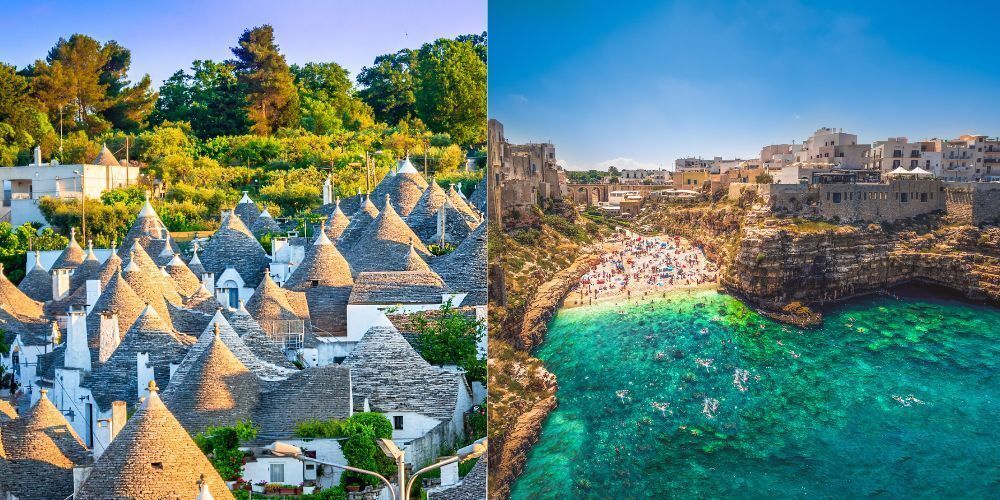
The villages we have pointed out to you in this article are among the most beautiful, not only in the Apulia Region, but also in Italy. They are all designed to be visited even in a one-day visit, perhaps from the capital city of Bari.
For an ideal holiday of relaxation and discovery of the villages of Apulia, we recommend you take a few days to stay in these beautiful places. You will often encounter unique landscapes and views such as the trulli of Alberobello. On your itinerary, you will be able to immerse yourself in a slower, relaxed, quiet life, as well as in villages that are very popular, even with young people, such as Gallipoli, for example.
All in all, you really lack nothing to choose the type of holiday that suits you best!
10. The Alberobello trulli

Alberobello is world-famous for its trulli, ancient conical buildings made of limestone. A UNESCO World Heritage Site, walking through the alleys of Alberobello is like taking a dip into the past. Among the main attractions are the Church of Sant'Antonio and the Trullo Sovrano, the largest in the town.
In detail, we recommend a visit to the Rione Monti: the most famous area of Alberobello, where around 1,000 trulli are concentrated. Here you will also find the Church of Sant'Antonio, built in the shape of the trullo we mentioned above.
Casa Pezzolla, a complex of 15 interconnected trulli, now a museum telling the life and traditions of Alberobello, is also worth a visit.
Curiosity: The trulli are built without mortar, using a dry technique that makes it possible to quickly dismantle the structures. This peculiarity was exploited to avoid paying taxes on new constructions.
In case your holiday plans include a stay in Bari, you can still visit some of the villages we recommend in this article. Discover the one-day tour of Alberobello, Monopoli and Polignao a Mare.
Discover the three villages tour9. The most beautiful villages in Apulia: Ostuni, the white city
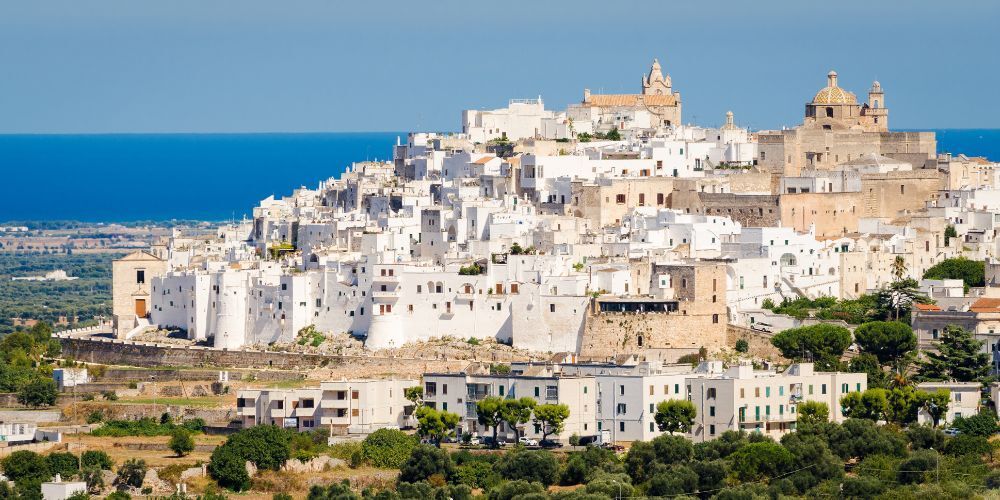
Known as the ‘White City’, Ostuni is an enchanting village perched on three hills. Its white houses, resplendent under the Apulian sun, create a labyrinth of alleys and small squares. Don't miss the Cathedral of Santa Maria Assunta, a jewel of Romanesque-Gothic art.
We recommend you start your visit at Piazza della Libertà: the beating heart of the city, with the Column of Sant'Oronzo and the Palazzo Comunale. Then you can take a tour of the Cathedral of Santa Maria Assunta. Located at the highest point of the city, the cathedral is an example of the fusion of Romanesque and Gothic styles. The view from here will be incredible.
Curiosity: Ostuni is called the ‘White City’ because, in the past, houses were whitewashed with lime, a practice that also had a hygienic function.
8. Locorotondo, among flowered balconies, white houses and vineyards
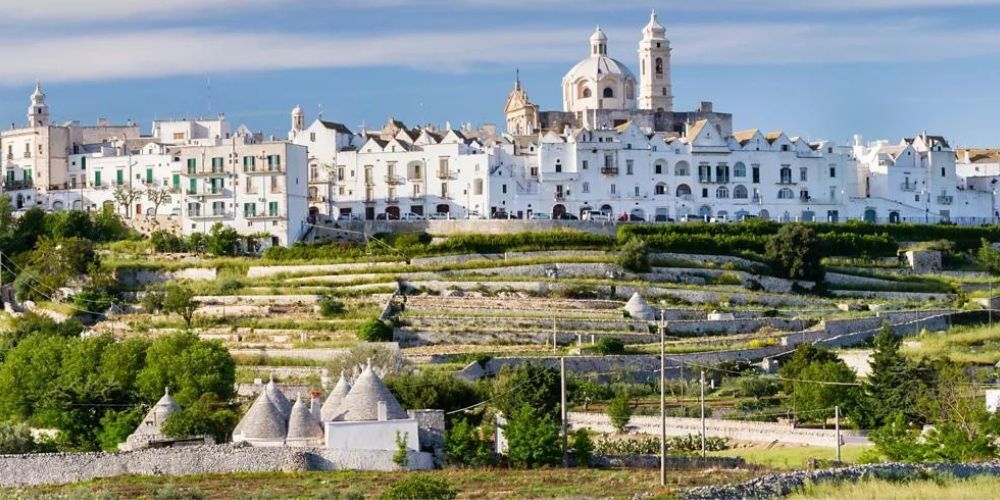
Locorotondo, as its name suggests, is a circular village located in the heart of the Itria Valley. Perhaps you have seen one of his images from above, with the unmistakable circle that his dwellings create. Its characteristic white houses and flower-filled balconies make it one of the most beautiful villages in Italy. Worth visiting is the Mother Church of San Giorgio and the belvedere that offers a breathtaking view of the valley.
The Church of the Madonna della Greca is the first recommendation we give you: it is one of the oldest churches in the village, dating back to the 14th century. Then there is the Villa Comunale, from which there is a breathtaking view of the Itria Valley, with its trulli and vineyards.
Curiosity: Locorotondo is also famous for its wines, in particular for the ‘Locorotondo DOC’, a dry and aromatic white wine that well represents the territory.
7. Cisternino, another village not to be missed
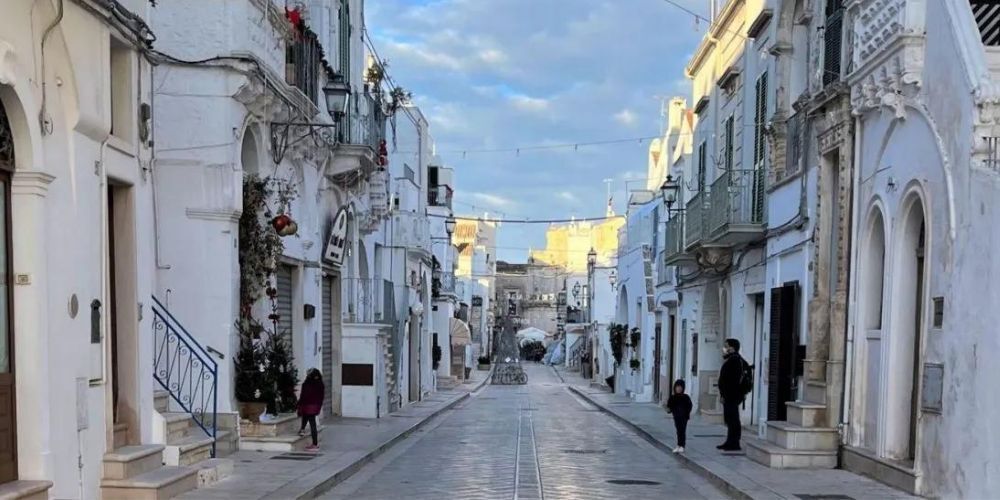
Just a few kilometres from Ostuni, you will find Cisternino. Another charming village in the Itria Valley. Here you can stroll through narrow alleys, arches and small squares, savouring the authentic atmosphere of the place. Don't miss the Torre Grande, which offers a splendid panoramic view.
The itinerary for this village that we recommend is to start at the Church of San Nicola: a Romanesque structure dating back to the 12th century, with a beautiful portal and frescoed interior. Then pop into Piazza Vittorio Emanuele, where you will find the Clock Tower, one of the most iconic places in Cisternino, a meeting point for locals and tourists alike.
Curiosity: Cisternino is famous for ‘Carne al fornello’, meat cooked in wood-fired ovens directly in the town's butchers, a unique gastronomic tradition. For this, don't miss the ‘fornacelle’. These are typical butcher's shops with a kitchenette, where you can choose the meat to be grilled at the moment.
6. The iconic Polignano a Mare
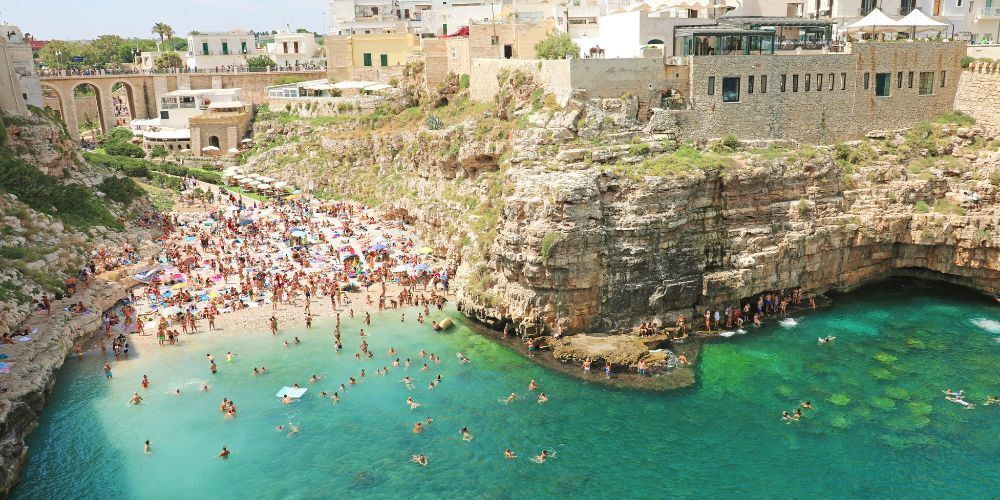
Most probably you have already heard of it and perhaps you have seen some photos of the beach nestled among the rocks: Lama Monachile. One of the absolute pearls of Puglia, a tourist destination par excellence. We are talking about Polignano a Mare. We could not fail to include this village among the ten most beautiful in Puglia. Overlooking the Adriatic Sea, it is most famous for its sheer cliffs and sea caves. The historic centre, with its narrow streets and terraces overlooking the sea, is the ideal place for a romantic stroll.
And so, the Lama Monachile beach is the first stop we recommend. Once there, you will find a deep, narrow inlet with a pebble beach, framed by high cliffs.
After some relaxation on the beach, continue your tour by going to see the Statue of Domenico Modugno: dedicated to the famous singer born in Polignano, and author of the well-known song ‘Volare’.
Don't miss the Grotta Palazzese either: one of the most famous sea caves, home to an exclusive restaurant with breathtaking views of the sea.
Fun fact: Polignano a Mare is also famous for the Red Bull Cliff Diving, a diving competition from the cliffs that attracts athletes and spectators from all over the world.
Discover the boat tour from Polignano e Mare5. Martina Franca, elegant and refined
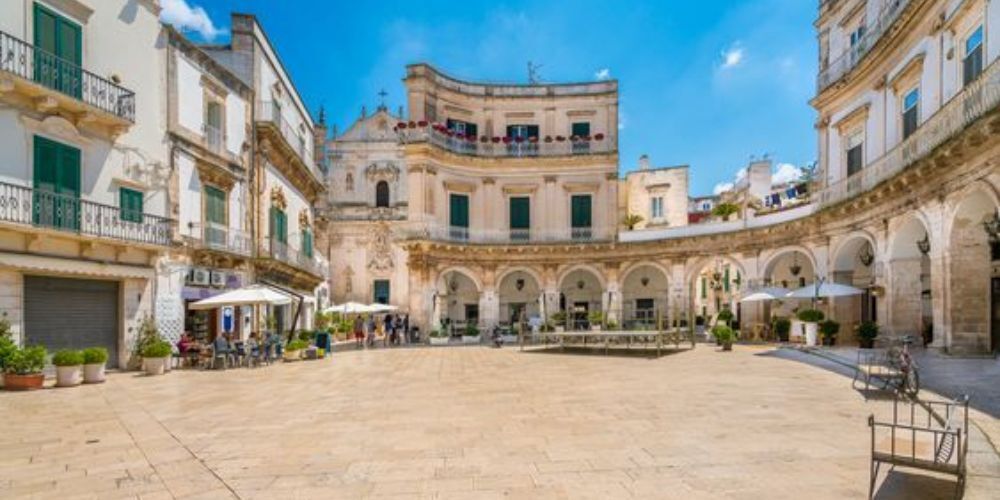
Martina Franca is an elegant and refined city, situated in the hills of the Murge. Its historical centre is a triumph of Baroque architecture, with stately palaces and monumental churches. The Basilica di San Martino and Palazzo Ducale are two must-sees.
The Ducal Palace is a must-see. An imposing Baroque palace that today houses the town hall, with splendid frescoed rooms that can be visited. Then the Basilica di San Martino, a splendid example of Apulian Baroque, with a richly decorated façade.
The Quartiere del Carmine is also worth a visit. It is a charming old quarter with winding streets and houses with flowered balconies.
Fun fact: Martina Franca is famous for ‘Capocollo di Martina Franca’, a prized cured meat that is an integral part of the Apulian gastronomic tradition.
4. The seaside village of Monopoli
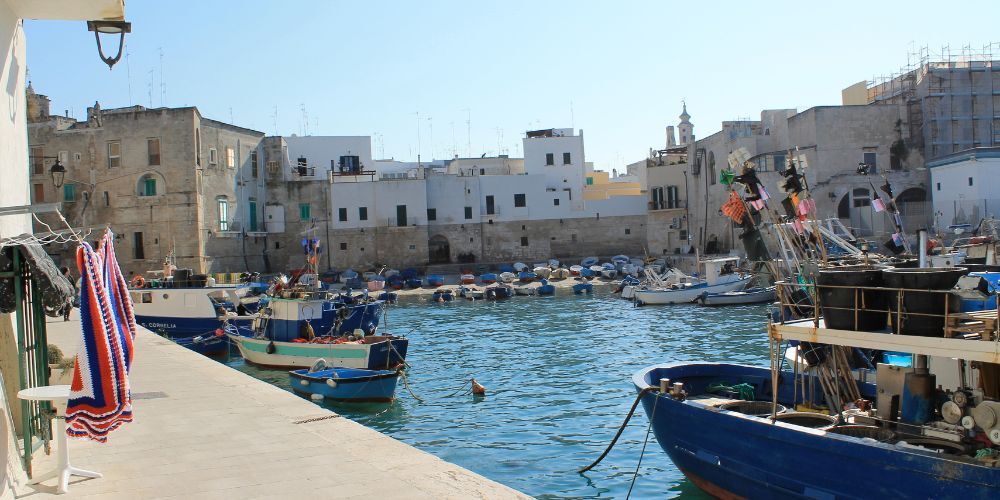
Monopoli is a seaside village that preserves its ancient soul intact. Definitely considered one of the ten most beautiful in Apulia. The old port, the Carlo V Castle and the Cathedral of the Madonna della Madia are the main points of interest. Monopoli is also the ideal starting point for exploring the beaches and coves of the Adriatic coast.
The Cathedral of the Madonna della Madia is an imposing Baroque cathedral housing the statue of the Madonna della Madia, much venerated by the faithful.
The Porto Vecchio, on the other hand, is a picturesque harbour still used by local fishermen, surrounded by ancient walls and towers. For panoramic views, on the other hand, all you need to do is get to the Castle of Charles V, which overlooks the sea.
Fun fact: Monopoli is famous for its ancient underground oil mill, an example of underground engineering where olive oil was produced.
3. Otranto, the most easterly point in Italy
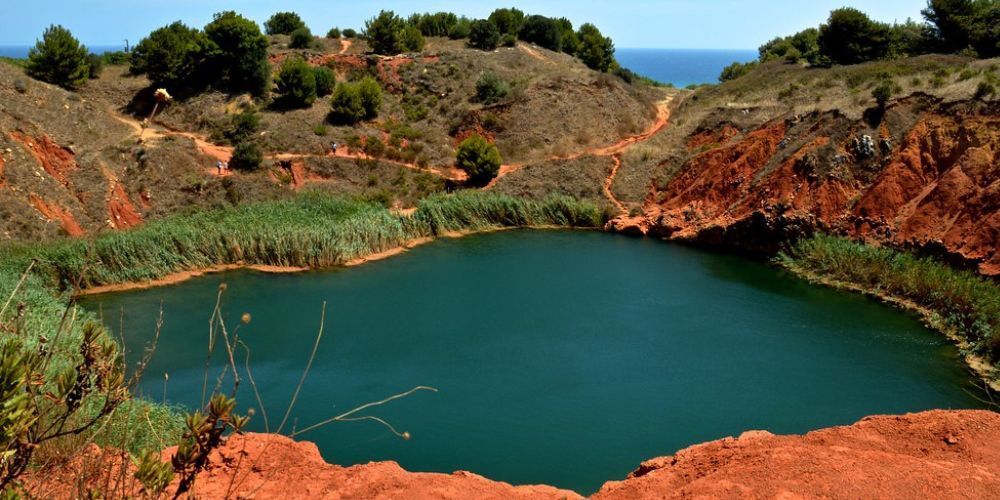
Otranto, a city rich in history, is the easternmost point of Italy, right at the heel of the boot. It is precisely recent archaeological discoveries that show that this town retains some of the most primitive evidence of relations with the Aegean peoples.
The Cathedral of Otranto, called Santa Maria Annunziata, with its 12th century floor mosaic depicting the Tree of Life, and the crypt with the remains of the martyrs of Otranto, is one of the masterpieces of medieval art.
Then pay a visit to the Aragonese Castle. A fortress that dominates the city and offers splendid views of the sea. In Otranto there is also the Bauxite Lake. A fascinating red-coloured lake near the town, formed in an old bauxite quarry.
Fun fact: Otranto is the most easterly point of mainland Italy, and on a clear day, you can see the coast of Albania.
2. Gallipoli, the ‘beautiful city’
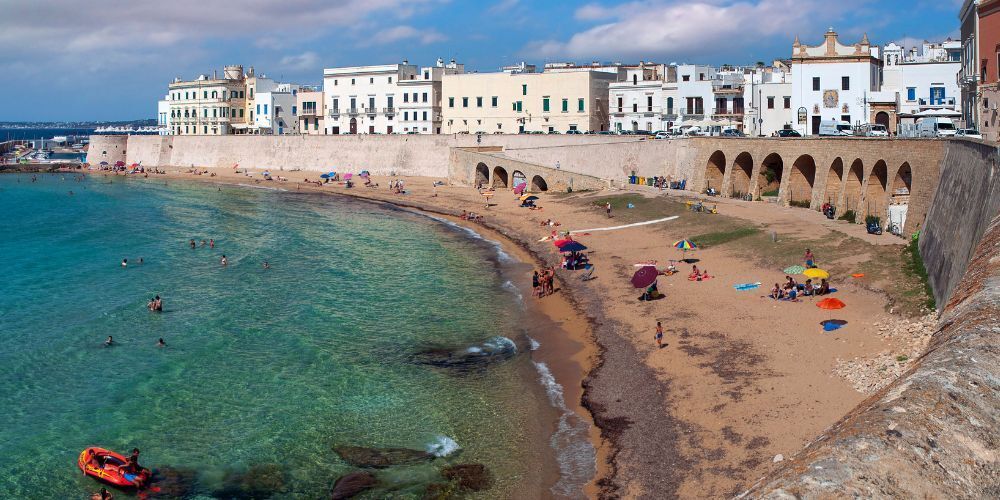
Gallipoli, whose name means ‘beautiful city’ in Greek, is one of the most popular destinations on the Ionian coast. Given its Greek name, it could not fail to be included in the list of Puglia's most beautiful towns. The historic centre, located on an island connected to the mainland by a bridge, is a maze of narrow streets, churches and historic buildings.
Among the sights to see, we recommend the Cathedral of Sant'Agata: a true example of the Lecce Baroque style, with a façade rich in sculptural details and decorated interiors.
Then, the Fontana Greca, which is considered the oldest fountain in Italy, located near the bridge that connects the old town to the mainland. A few kilometres from the coast is the Island of Sant'Andrea. Here you will find a nature reserve rich in birdlife and a lighthouse.
Fun fact: Gallipoli is divided into two parts: the old town, located on an island, and the modern part, on the mainland. The bridge that connects them is one of the most photographed spots.
1. Vieste a beautiful village with a love legend
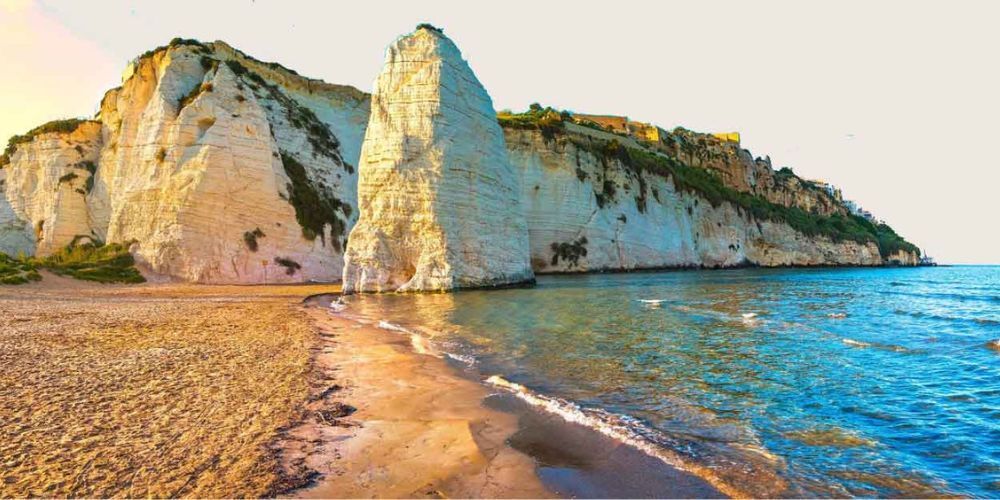
Located on the Gargano promontory, Vieste is famous for its beaches and picturesque old town. The Pizzomunno, a limestone monolith that stands on the beach, is the symbol of the town.
The famous 25-metre white monolith is called Pizzomunno. It dominates the beach at Vieste and is linked to a love legend.
The Cathedral of Santa Maria Assunta is one of the oldest churches in Apulia, with a bell tower of Norman origin that is worth a visit. A boat trip along the coast will allow you to discover fascinating sea caves, such as the Grotta dei Pipistrelli and Grotta Sfondata.
Curiosity: The legend of Pizzomunno tells of a young fisherman turned into a rock by the unrequited love of a mermaid. Every year, during a night in August, according to the legend, the two lovers can see each other again for just one night.
About the author
Written on 02/09/2024


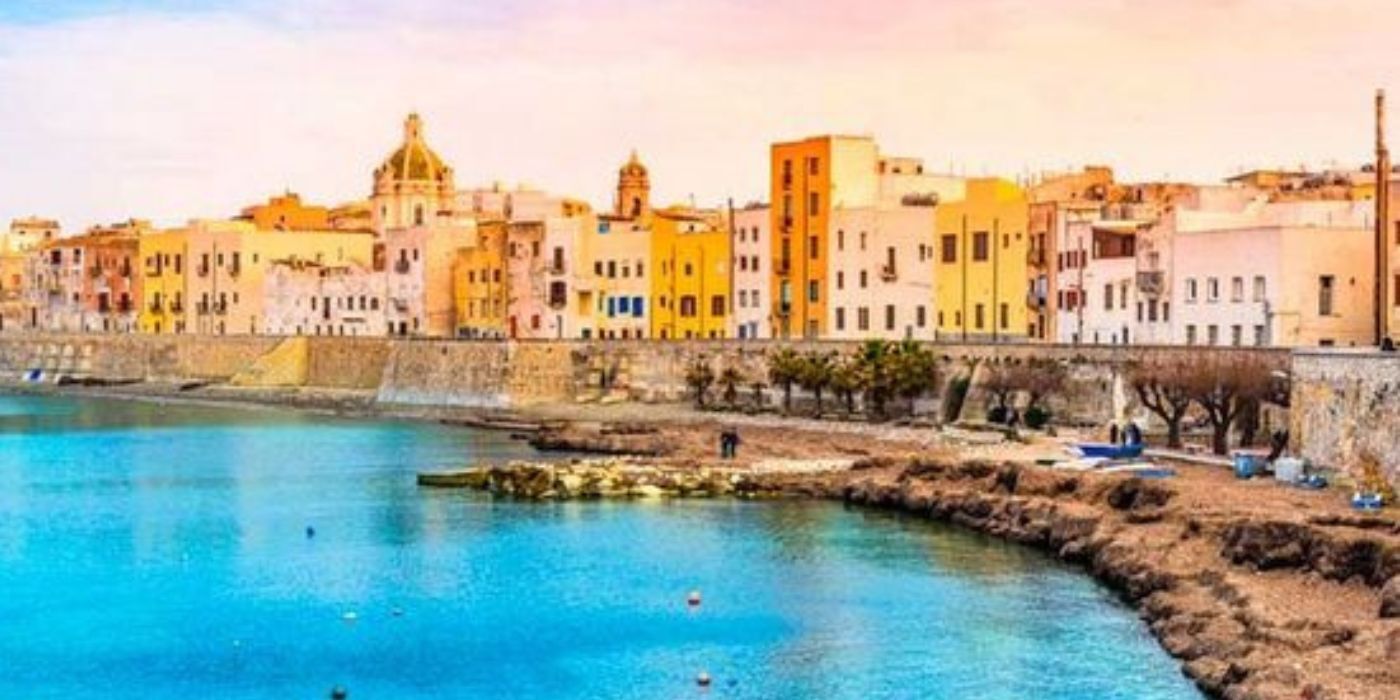
Lorenzo Braccini
Here for you the ten most characteristic villages to visit in Apulia, among beauty and curiosity.